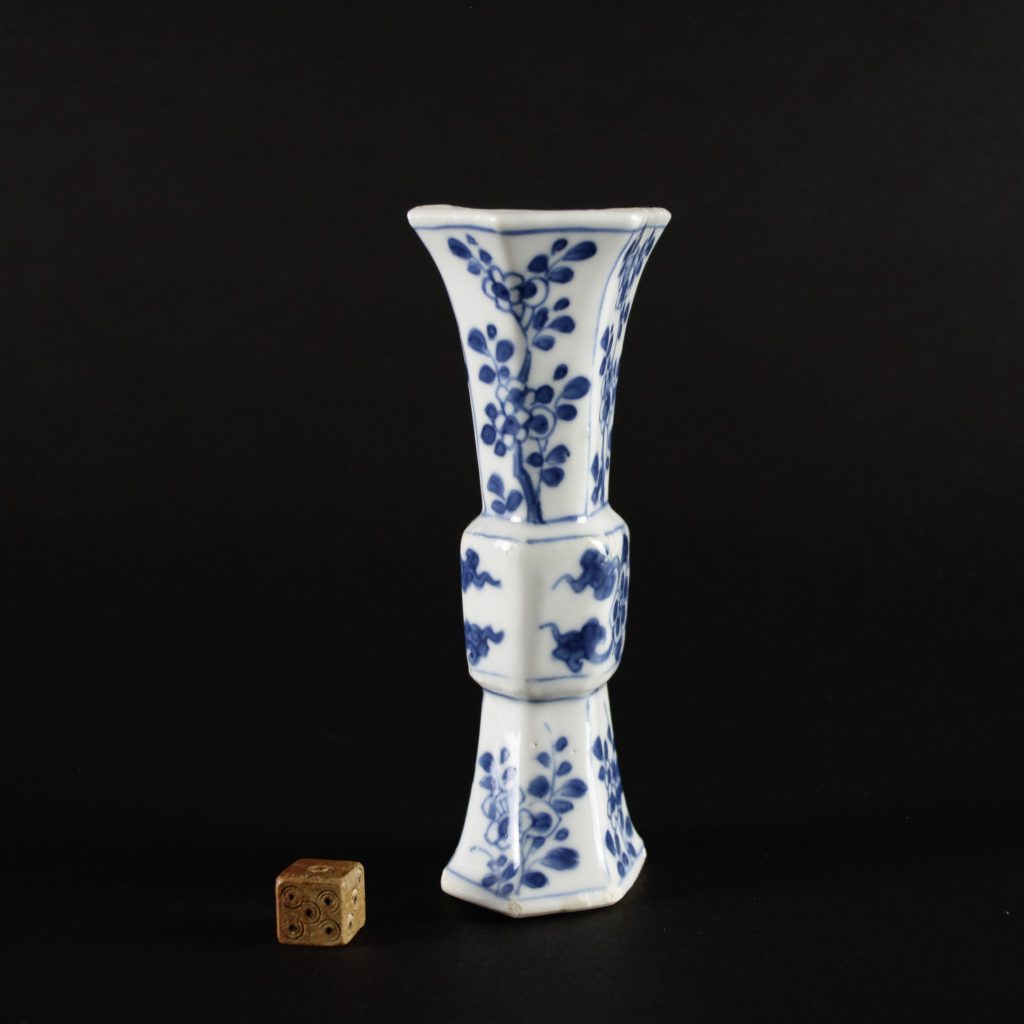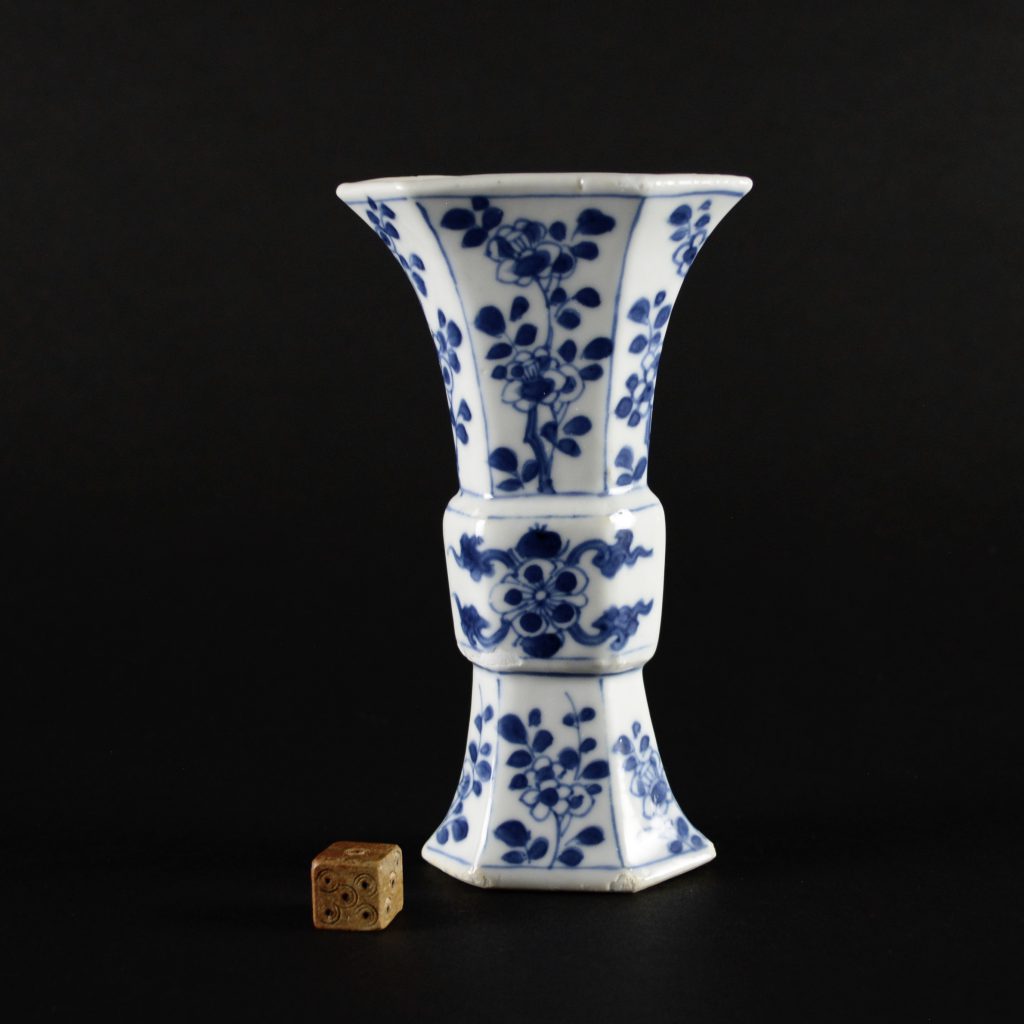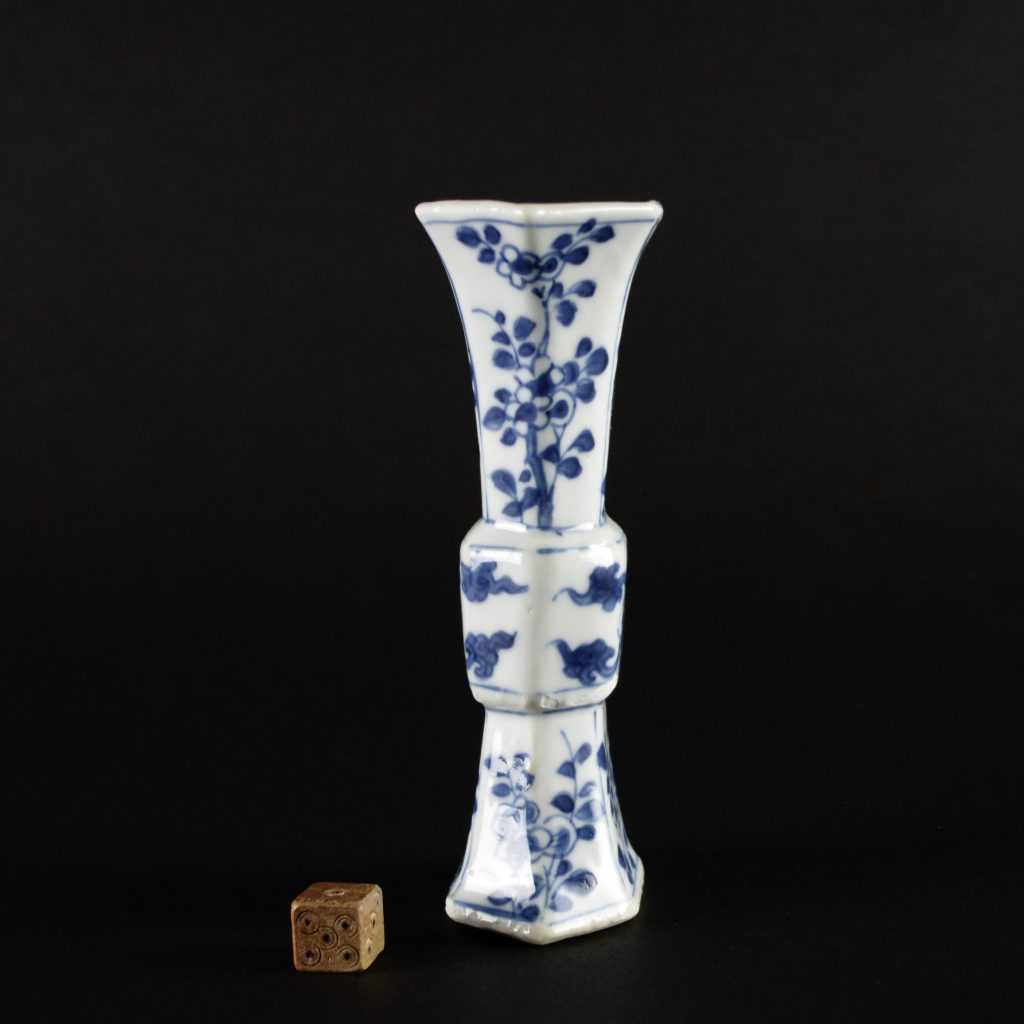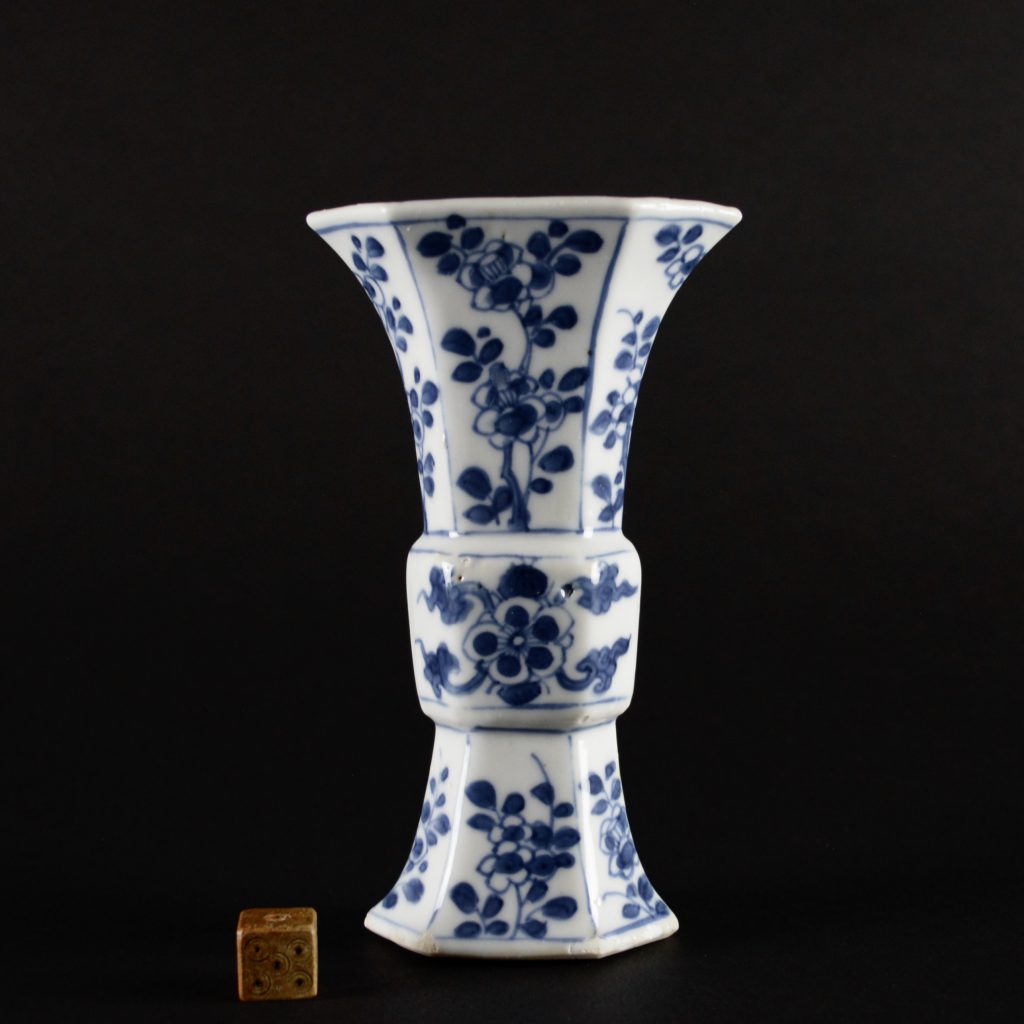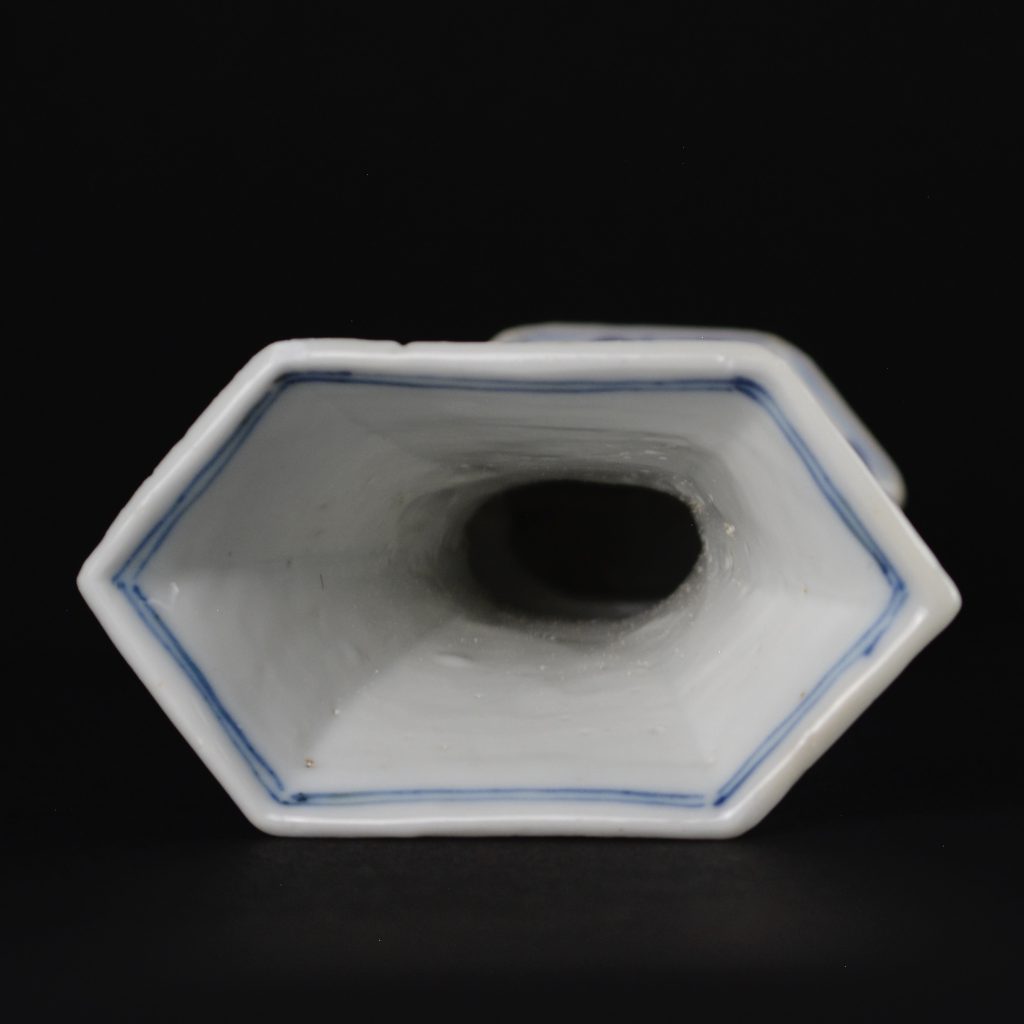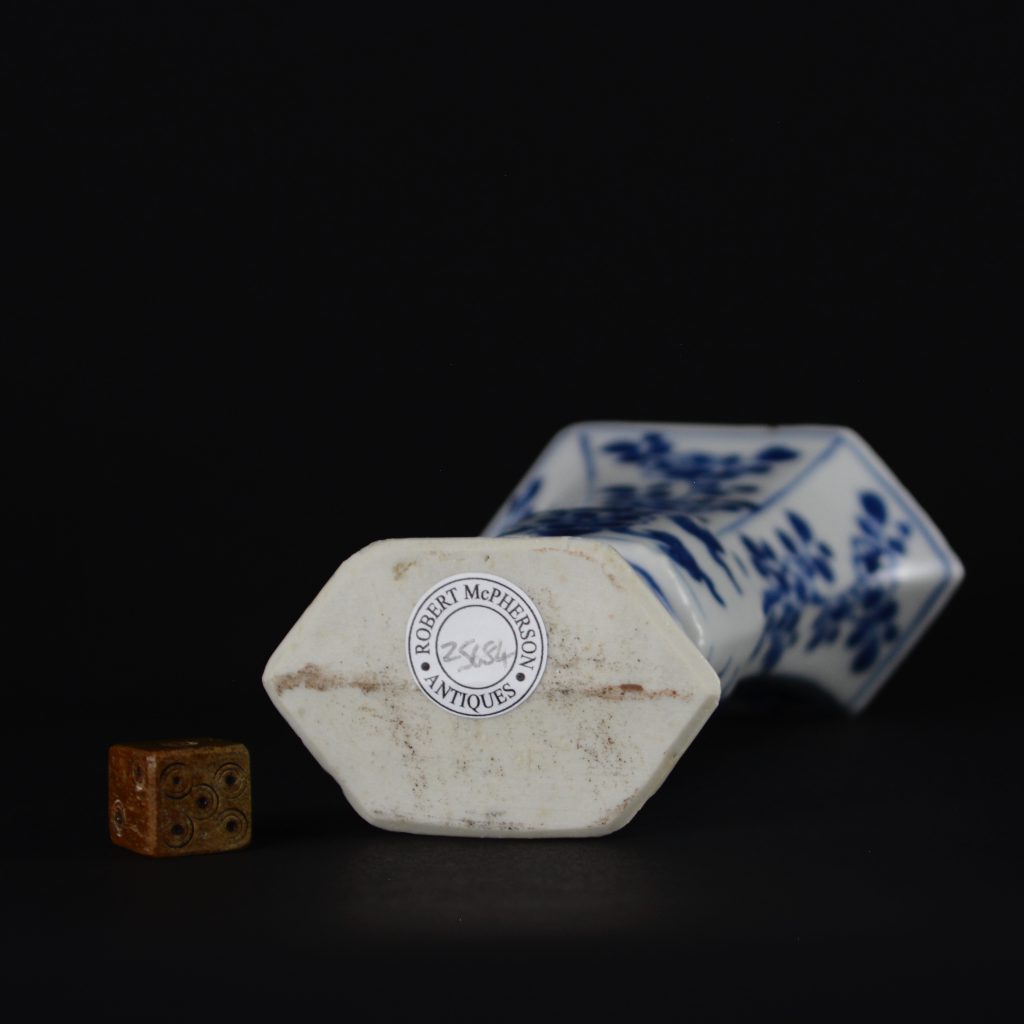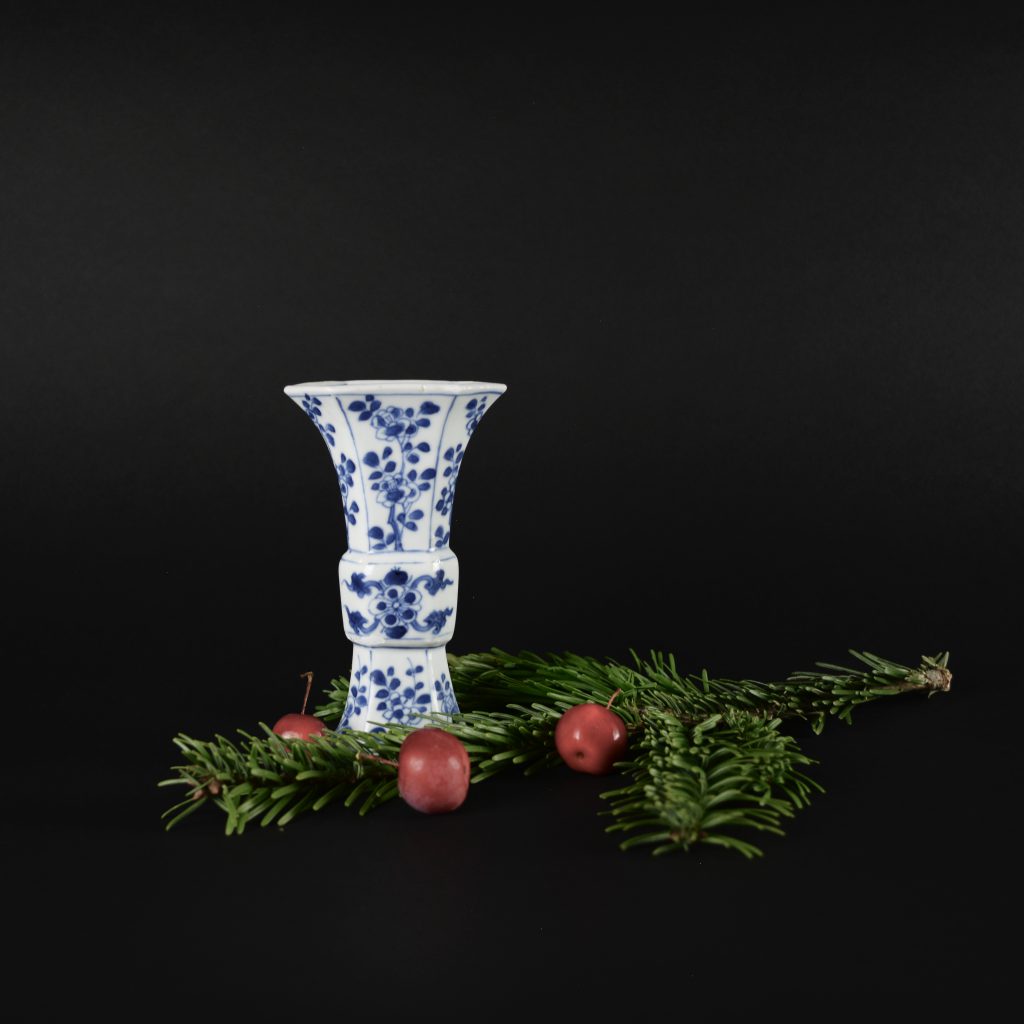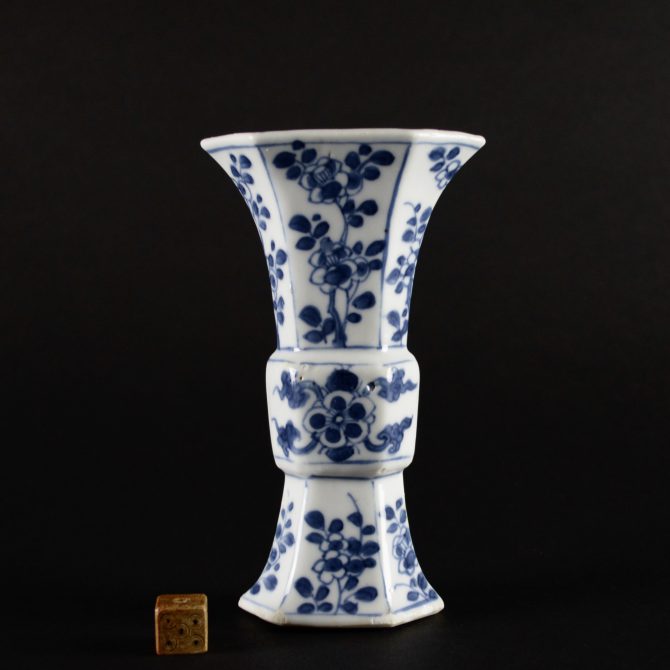
A Small Kangxi Blue and White Porcelain Gu Shaped Vase
A Small Kangxi Blue and White Porcelain Gu shaped vase c.1690 – 1710. This small Kangxi porcelain vase is of flattened waisted hexagonal form with a bulbous central section. The blue and white decoration consists of flowers within panels. For more information about the Western uses of these Kangxi export porcelain vases see below the photograph gallery.
SOLD
- Condition
- Some fritting to the lower edge and under the central section, a small glaze frit to one corner. Firing fault - the base is slightly uneven, the vase stands straight but moves if pushed.
- Size
- Height 12.3 cm (4 3/4 inches)
- Provenance
- From a Private Dutch Collection.
- Stock number
- 25684
Information
Kangxi Porcelain Vases in Baroque Displays / China Mania :
Small Vases Such as the Present Examples were Ordered in Large Quantities By the Dutch East India Company (V.O.C.) at the End of the Seventeenth Century. They were often used as Part of Fashionable Baroque Decorative Schemes, Displayed on Gilded Brackets and on little Ledges, in fact on any and every Available Surface. The Desired Effect was to Show the Pieces on Mass as part of a Grand Room Setting, Arranged so as to Overwhelm the Spectator. This Fashion, Sometimes Referred to as `China Mania` was Bought from Holland to England by Mary II (Reigned 1689 -1694). Her Rooms at Kensington Palace (5 Minutes Walk from our Shop) were Decorated in this Fashion. Daneil Defoe (1660-1731) Stated that "The Queen (Mary) bought in the custom or humour, as I may call it, of furnishing houses with China-Ware, which increased to a strange degree afterwards, piling their China upon the tops of cabinets, scrutores, and every chymney-piece, to the top of the ceilings, and every setting up of shelves for their China-Ware, where they wanted such places, till it became a grievance in the experience of it, and even injurious to their families and estates". Even allowing for Artistic Licence this give an Idea of the Extent of the Fashion. This Obsession with Chinese and Japanese Porcelain Varied Slightly from Country to Country, the Type of Porcelain Varied, for Example French Inventories are Almost Exclusively of Blue and White, where as Queen Mary`s Included Many Pieces of Kakiemon and Imari. The way the Pieces were Displayed also Varied. The Formal Display of Porcelain may have derived from the Italian method of organising Collections or the German Kunstkammer. The Kustkammer was a Very Mixed Display, which would put Exotic Shells next to an Animal Scull next to a Piece of Chinese Porcelain. What Ever it`s Origins earlier in the Seventeenth Century it has traditionally been accredited to the Huguent Daneil Marot (1661-1752). The French Man was well Versed in the Court Taste of Louis XIV, he Took these new Ideas to Stadholder William of Holland, Later to Become William III of England, Husband of Queen Mary II.
